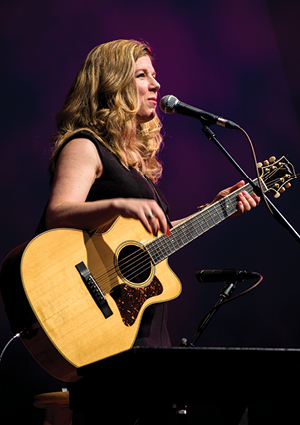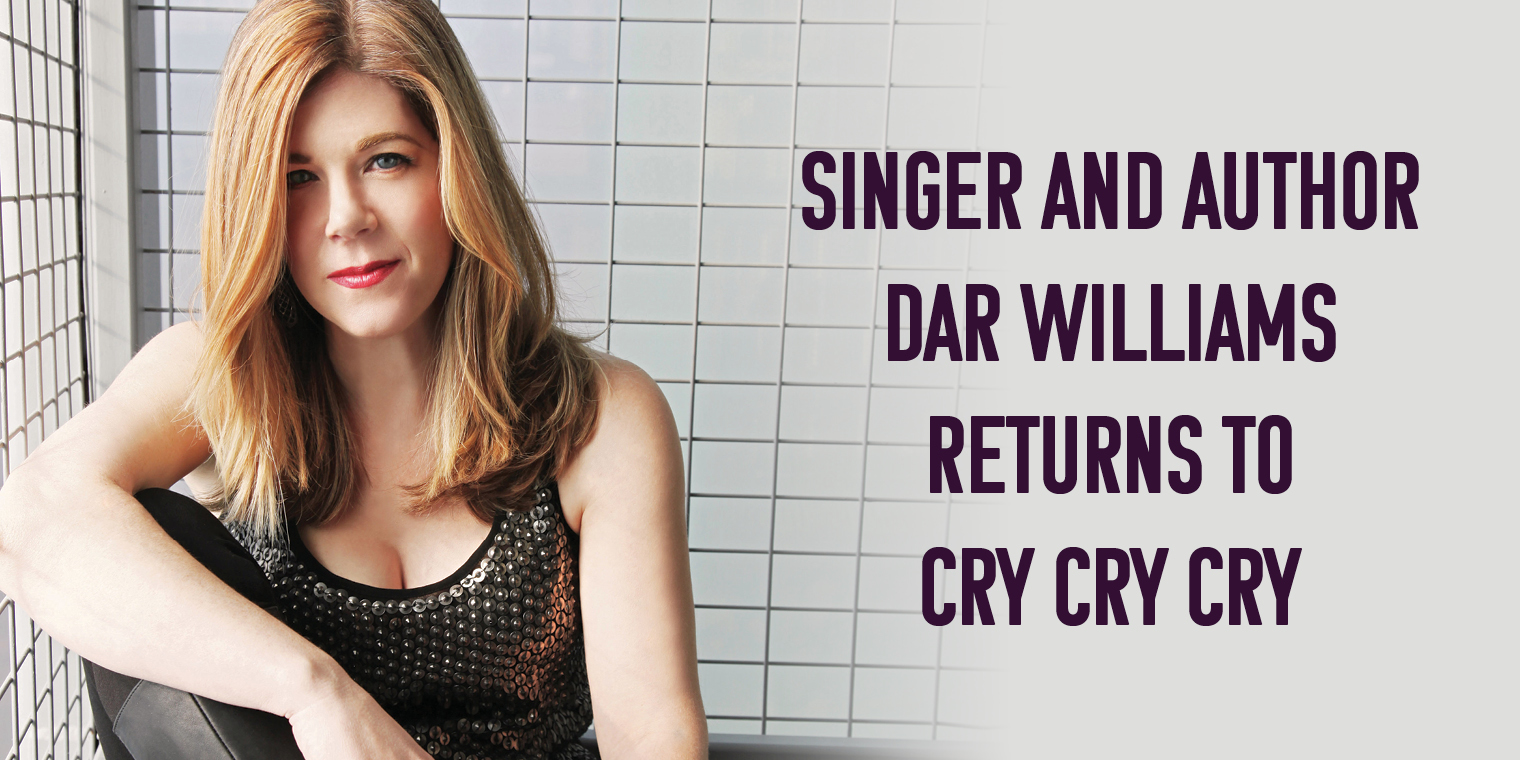It was nearly 25 years ago when singer Dar Williams started earning notice in the folk industry thanks to three small-release albums and opening for Joan Baez in concert. The folk legend even recorded several of Williams’ songs, and the two women have also had a successful duet in the song, “Ring Them Bells.”
Over the years, Williams has released nine successful studio albums, including her latest Emerald in 2015. In 1996, the album, Mortal City put her on the map and Williams notes these are the songs that have kept her travelling.
“Back then, I was working with coffeehouse volunteers, local radio stations and promoters who were trying very hard, with limited resources, to bring music, poetry and life back into their downtowns,” she says. “That recording, a wistful and upbeat travelogue carried by a hopeful narrative, poetic lyrics, and a sleek full band comprised of friends, was a statement of faith, and now, 20 years later, I say it as a statement of fact.”
Recently, Williams has been involved in a wide range of different efforts and projects: teaching a course titled “Music Movements in a Capitalist Democracy” at her alma mater, Wesleyan University; working with children at several summer camps; leading songwriting workshops; and writing a book about the ways she’s seen towns becoming more independent and prosperous over her 20 years of touring.
Her new book, What I’ve Found in a Thousand Towns, details the experiences of the country trying to find its way back to its downtowns and its urban centers for the last 25 years.
“There are very few examples of cities going backwards since the mid-’90s in terms of people finding ways to dig in, and there was such a strong surge of the return of the downtown that I wanted to figure out how it happened,” Williams says. “I wanted to find out how they’ve grown and grown so robustly, and I feel as if I figured it out.”
Although writing the book took some time away from her music, she used the almost two-year writing process to focus and feels that now that it’s finished, her songwriting will be better for it.
 “I have about six different fragments in my head right now and I nudge at them separately and then they surface quickly. I have learned not to push the timeline,” she says. “When I write, I go to places that are interesting to me and might catch me off guard. The best scenario for me is to walk around and have your creative windows open so a tree is no longer a tree but a symbol of your youth.”
“I have about six different fragments in my head right now and I nudge at them separately and then they surface quickly. I have learned not to push the timeline,” she says. “When I write, I go to places that are interesting to me and might catch me off guard. The best scenario for me is to walk around and have your creative windows open so a tree is no longer a tree but a symbol of your youth.”
Williams also was part of the band Cry Cry Cry, a successful musical pairing of Williams, Lucy Kaplansky and Richard Shindell. Together, the folk singers recorded a chart-topping self-titled record, and were a mainstay on the radio for more than a decade.
The singers went their separate ways 20 years ago, but have reunited in 2018 for a tour and possibly new music.
“Cry Cry Cry has reunited and it’s been a great homecoming,” Williams says. “It’s taken some time to get it right, but it’s been great fun and we’ll be playing throughout 2018.”
On April 8, Williams will be appearing with Cry Cry Cry at sixth & I, for a night that will see tunes from their album, personal faves of each singer and some new music that the trio has been experimenting with.
“There are certain audiences that seem more active than passive, and seem more engaged in what’s going on and you can feel that up on the stage, feel it during the first song,” Williams says. “The most wonderful night is when you’re on stage and in tune and you come out and you see them watching and hear them listening.”
Looking ahead to the rest of 2018, Williams plans on allowing equal time to both her musical career and writing career.
“I would like to do some pieces around what I have learned since releasing the book. It turns out I couldn’t have released it at a better time in terms of wanting to talk about how they feel they are engaging with their towns and cities,” she says. “I want to write some essays about that. I’m also excited about writing more songs and toggling back and forth. I expect to be in the studio by the end of the year.”






